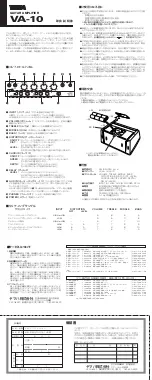
Network operations | 27
10 : 4.Network robustness
K Series amplifiers equipped with a KAESOP are capa-
ble of being networked routing both data and audio streams
to each other.
In dealing with networks of amplifiers, one of the most
important aspects to consider, especially when working in
a critical application such as large venue sound distribution,
is the robustness of the network itself. Data and audio con-
nections can be made fault proof by means of some level
of redundancy.
The degree of redundancy expresses how many net-
work connections can break before sound is interrupted in
any one amplifier part of the system.
A zero degree redundant system is not robust: the first
connection to jump (either from a cable failure or even from
an amplifier problem) means the whole system goes down.
A one degree redundancy system, on the other hand,
will continue working automatically if one (but no more than
one) connection fails.
K Series amplifiers support up to two degrees redun-
dancy thanks to the adoption of proper networking topol-
ogy: by detecting any connection failure on both analog and
digital input K Series amplifiers are capable to automatically
(and almost instantaneously) modify the audio feed direc-
tion to allow the output signal to remain uninterrupted.
The following section illustrates and analyzes some
common amplifier network topologies with different degree
of redundancy.
10 : 4.1. Daisy chain
Daisy chain is a wiring scheme in which multiple devices
are networked together in sequence, i.e. in series.
FIGURE 40
and
FIGURE 41
show the diagrams of daisy
chain connections of 4 amplifiers with four and two AESOP
ports respectivelly.
In both configuration, only the first amplifier – feeded
with the digital signal via the AES3-XLR – is set in forward
mode: any other amplifier in the chain is a repeater.
Ethernet data are fed through any free port, either pri-
mary or secondary, and conveyed to the AESOP with the
AES3.
This daisy chain topology is not robust (zero degree of
redundancy). If any single AES3 or Ethernet cable connec-
tion is interrupted, the whole system fails.
10 : 4.2. Daisy chain with redundant AES3
A slightly more robust network with respect to the audio
system is the one illustrated in
FIGURE 42
and
FIGURE 43
.
Two amplifiers, the first and the last one in the chain, are
set to work in forward mode. The remaining amplifiers are
set to work in repeater mode.
Even if both the leading and the trailing amplifier forward
the AES3 strem through the AESOP, there is no risk of data
collision; furthermore, all amplifiers ara capable to switch
in real time to the best signal source in case of connection
failures.
This configuration implies the use of an AES3 patch bay
in order to feed with the same digital signal the leading and
trailing amplifiers.
AESOP
AES3-A stream
Control data stream
Port 1
(primary)
Port 2
(primary)
XLR
AES3
AES3
source
Network
data input
Port 3
(secondary)
Port 4
(secondary)
Port 1
(primary)
Port 2
(primary)
XLR
AES3
Port 3
(secondary)
Port 4
(secondary)
Port 1
(primary)
Port 2
(primary)
XLR
AES3
Port 3
(secondary)
Port 4
(secondary)
Port 1
(primary)
Port 2
(primary)
XLR
AES3
Port 3
(secondary)
Port 4
(secondary)
Audio
Audio + Data
Audio + Data
Audio + Data
Data
Repeat AES3-A
from PORT 2 to PORT 1
Repeat AES3-A
from PORT 2 to PORT 1
Repeat AES3-A
from PORT 2 to PORT 1
Forward to AES3-A
1
2
3
4
FIGURE 40: Daisy chain - four port models.
AESOP
AES3-A stream
Control data stream
XLR
AES3
AES3
source
Network
data input
Port 1
(primary )
Port 2
(primary)
XLR
AES3
XLR
AES3
XLR
AES3
Port 1
(primary)
Port 2
(primary)
Port 1
(primary)
Port 2
(primary)
Port 1
(primary)
Port 2
(primary)
Audio
Audio + Data
Audio + Data
Audio + Data
Data
Repeat AES3-A
from PORT 2 to PORT 1
Repeat AES3-A
from PORT 2 to PORT 1
Repeat AES3-A
from PORT 2 to PORT 1
Forward to AES3-A
1
2
3
4
FIGURE 41: Daisy chain - two port models.














































